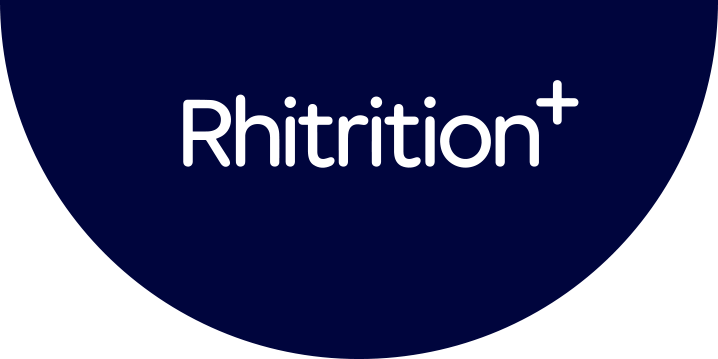How To Support Healthy Bones & Joints
Article by Rhiannon Lambert, BSc MSc RNutr
What do I need for healthy bones and joints?
To understand the health of bones, we first need to know more about their make-up.
Bones are living tissue, made up of a structural protein matrix, predominantly collagen, and filled with bone mineral (calcium phosphate) to increase its strength. Of all the calcium present in the body, more than 99% of it resides in bone tissue and the rest in blood.Bones are extremely important for bodily structure but they also act as a calcium reserve; a method of maintaining blood calcium levels within narrow limits.
In addition to structure, our bones also help to produce blood cells, protect our vital organs and provide us with support and will continuously be remodelled throughout our life as we grow and age.
Changes to bone mass
Infant years (under 5 years)
From when we are born to the age of five, our bodies go through a lot of changes, both physically and mentally, as we grow and develop. We learn to sit-up, stand up, walk, talk, feed ourselves, and just generally become more independent. For us to be able to do all of these things we need to ensure we keep our bones, joints, and muscles healthy.
Having a varied and balanced diet, as well as regular physical activity will help to strengthen and maintain our bone health, not just as children but throughout our lives.
Some particular nutrients to focus on as children are vitamin D and calcium. Vitamin D can be found in foods such as oily fish, mushrooms, egg yolks, and fortified foods like fat spreads, yoghurts, and some breakfast cereals.
The Department of Health and Social Care recommends that babies under the age of one who are breast-fed or formula-fed with less than 500ml of infant formula a day, should take a daily supplement containing 8.5mcg to 10mcg of vitamin D. For children aged 1-4 years, it’s also recommended to take a daily supplement containing 10mcg of vitamin D throughout the year, to ensure they meet the daily requirements to help growth and development, and maintain overall bone health.
There may also be some evidence that suggests vitamin K, found in dark green leafy veg and beans, may also help to stimulate bone formation. Making sure we get enough of this vitamin, through a healthy and balanced diet, may also help to promote optimal bone growth and development in children.
Children, adolescents & adults (5-64 years)
Our bone mass increases as we grow until we reach our peak bone mass (the greatest mass our bones will ever reach) in our early twenties. Following a period of consolidation, at around 40 years old bone loss increases above bone formation, which means our bone mass starts to decrease. It is therefore very important to optimise bone mass during growth, to improve our peak bone mass, in order to promote bone health in older life.
Excessive bone loss as we age can result in osteoporosis which increases bone fragility and fracture risk. This may cause mobility problems, increase the risk of falls, and in some extreme cases it may even cause death. Poor bone mineralisation in children can lead to rickets, which is a bone disorder that results in deformity due to the softening of the bones. This is known as osteomalacia in adults.
It is important to note that bone loss is accelerated in women following the menopause, due to the cessation of oestrogen production which ordinarily protects bones. It is therefore critical for women to support the formation of bones early in life, to reduce the likelihood of brittle bones, osteoporosis and falls later on.
Older adults (65+ years)
As we become older our bones naturally become weaker, and so ensuring we get enough of the right nutrition in the earlier stages of our lives is important to help prevent the risk of various bone disorders and fractures, which may have a larger knock on effects on our overall health.
We also need to be mindful that as we age our appetite often decreases too and it may become more difficult to chew and swallow food. This means we may not get enough nutrients from the food we eat.
Ensuring we have a balanced diet, alongside regular physical activity, may help us to maintain strong bones and joints.
Important vitamins and minerals for bone health
Calcium
Calcium is a mineral that helps with bone growth and development of the skeleton. Therefore, a calcium deficiency is a risk factor for both osteomalacia and osteoporosis in adults. Dietary sources of calcium include; broccoli, cabbage, okra, nuts, milk and dairy products, fortified white flour (bread), fortified breakfast cereals, fish where you eat the bones and tofu. Spinach is another food which contains calcium, however, is not a good source as it also contains oxalic acid which decreases the bioavailability of calcium.
As we age we lose muscle mass and bone density, increasing the risk of osteoporosis and frailty. Between age 19–64 healthy adults should aim to consume 700mg of calcium a day to protect bone health, and sufficient vitamin D to absorb it. Older people (and breastfeeding women) should increase this to at least 1,000mg. Getting enough calcium is particularly important during the menopause as this stage of life can really accelerate the age related decline in bone mineral density.
Vitamin D
Vitamin D is involved in the absorption of calcium and phosphate and is essential for bone growth. Similar to calcium, a vitamin D deficiency increases the risk for both osteoporosis and osteomalacia in adults.
Most of our vitamin D is synthesised by the skin when the body is exposed to sunlight. Although vitamin D can be obtained from the diet, it is difficult to reach the recommended amount of 10mcg a day from food alone, so it is recommended that adults take a vitamin D supplement in winter months to prevent deficiency. Dietary sources of vitamin D include oily fish, like salmon, herring, and mackerel, dairy products, egg yolks, mushrooms, and fortified foods such as breakfast cereals.
Vitamin D supplementation is also important for older populations as they may not get outside enough due things like mobility issues. As we need vitamin D to help maintain our bone health, and as our bones naturally become weaker as we get older, it highlights the importance of vitamin D supplementation in this age group.
Omega-3
There may also be some evidence to suggest that diets rich in omega-3 fatty acids may be beneficial for the health of our bones, however more evidence is needed to confirm this. These omega-3 fatty acids can be found in foods such as oily fish, like salmon, sardines, trout, or mackerel, flaxseeds, walnuts, and chia seeds.
Magnesium
Some research has highlighted that magnesium may play a role in increasing bone mineral density and reducing the risk of osteoporosis in older adults, but like omega-3 fatty acids, more studies are needed to fully understand how this nutrient impacts our bone health. Foods rich in magnesium that should be consumed as part of a balanced diet include spinach, nuts, wholemeal bread, and fortified foods such as flour and breakfast cereals.
Zinc
Zinc is another micronutrient that is important for bone health, particularly in bone growth and mineralisation which help keep the skeleton strong. Some good sources of zinc include shellfish, dairy foods such as milk and cheese, red meat, pecans, fortified foods like breads, cereals, and flour.
Other important vitamins and minerals
Vitamin C is involved in the synthesis of collagen, the main protein present in bone. Good dietary sources include citrus fruit, peppers, broccoli, strawberries, Brussels sprouts, and potatoes.
Phosphorus is involved in bone growth and good dietary sources include red meat, dairy products, fish, poultry, bread, brown rice, and oats. However, prolonged excess intake of phosphorus has been associated with reduced absorption of calcium and leaching which increases the risk of fracture.
Exercises to keep bones healthy
Children
For those aged 5 and under, once they are able to walk it’s suggested that they should aim for at least 3 hours of physical activity a day to help support over health as well as aid development.
Between the ages of 5-18 years, it’s recommended that children and young people aim for at least 60 minutes of moderate to vigorous physical activity and take part in a variety of intensity exercises designed to develop movement skills, as well as muscle and bone strength too.
Adults aged 19-64 years
According to the NHS, some form of physical activity is recommended every day for adults in the UK. Across the week adults should aim to do 150 moderate-intensity exercise or 75 mins of high-intensity exercise, as well as strength-based exercises too. These recommendations are also suitable for women going through the menopause.
Over 65s
To help reduce the risks of bone disorders, such as osteoporosis, and fractures Public Health England and the NHS recommends adults over the age of 65 years should aim to get 150 mins of moderate-intensity physical activity in each week, as well as strength-based exercises twice a week.
Some examples of moderate-intensity physical activity include
Walking
Swimming
Water aerobics
Riding a bike
Playing tennis
Mowing the lawn
Strength exercises may include
Yoga
Lifting weights
Carrying shopping bags
Heavy gardening
Incline walking, such as when up and down stairs or on less flat ground
So, what can we do to maintain our bone health?
There are plenty of simple things we can add to our daily routines to help support and maintain healthy bones throughout our lives.
Having a balanced diet rich in a variety of nutrients, particularly calcium, vitamin D, and other essential micronutrients.
Consider a vitamin D supplement, particularly in the winter months or if you have darker skin.
Incorporate regular physical activity, including strength exercises, into your daily routine.
Evidence
https://www.nutrition.org.uk/health-conditions/bone-and-joint-health/
https://academic.oup.com/jn/article/137/11/2507S/4664497
https://www.nhs.uk/live-well/healthy-body/food-for-strong-bones/
https://www.nhs.uk/conditions/vitamins-and-minerals/vitamin-d/
https://www.who.int/dietphysicalactivity/publications/trs916/en/gsfao_osteo.pdf?ua=1
https://www.gov.uk/government/news/new-physical-activity-guidelines
https://www.ncbi.nlm.nih.gov/pmc/articles/PMC3899785/
https://www.sciencedirect.com/science/article/pii/S8756328221003999



